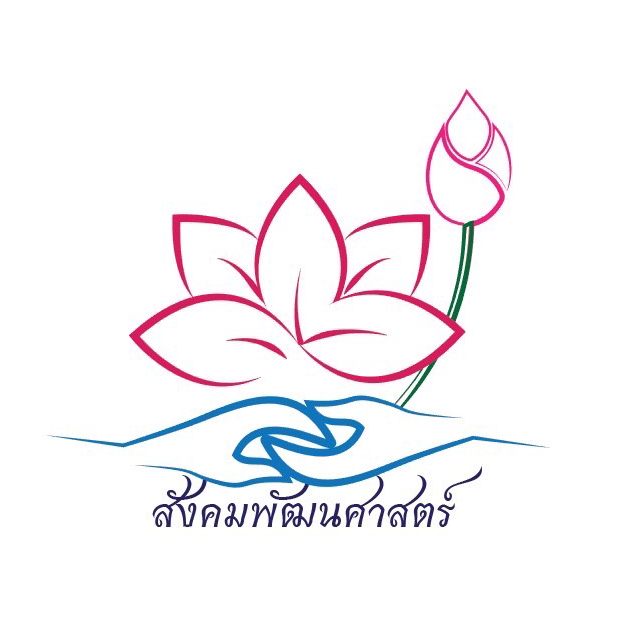กระบวนการและกลยุทธ์การใช้สื่อในการสื่อสารเพื่อสร้างความนิยมทางการเมือง
Main Article Content
บทคัดย่อ
การสื่อสารทางการเมือง เป็นกลไกสำคัญในการสร้างความนิยมทางการเมืองหรืออิทธิพลทางการเมืองให้กับนักการเมือง กลุ่มการเมือง หรือพรรคการเมือง ผ่านการใช้สื่อในการสื่อสารกับประชาชนเป้าหมายเพื่อสร้างการรับรู้และการสนับสนุนในกิจกรรมทางการเมือง ตลอดจนการสร้างภาพลักษณ์และความนิยมทางการเมืองให้เกิดขึ้น โดยการใช้สื่อในการสื่อสารเพื่อสร้างความนิยมทางการเมืองนั้นมีบทบาทสำคัญในฐานะตัวกลางระหว่างนักการเมือง กลุ่มการเมือง และพรรคการเมือง กับประชาชน ถือเป็นหัวใจสำคัญในการขับเคลื่อนชัยชนะหรือความสำเร็จในการสื่อสารทางการเมืองของนักการเมือง กลุ่มการเมือง หรือพรรคการเมือง ที่จำเป็นต้องคำนึงถึงการใช้สื่อให้มีประสิทธิภาพสูงสุดเพื่อให้บรรลุตามเป้าหมายที่ตั้งไว้ โดยบทความเรื่อง กระบวนการและกลยุทธ์การใช้สื่อในการสื่อสารเพื่อสร้างความนิยมทางการเมือง มีจุดมุ่งหมายสำคัญเพื่อนำเสนอกระบวนการและกลยุทธ์การใช้สื่อที่มีประสิทธิภาพและประสิทธิผลในการสื่อสารเพื่อการสร้างความนิยมทางการเมืองให้กับนักการเมือง กลุ่มการเมือง หรือพรรคการเมือง ซึ่งถือเป็นกลไกสำคัญในการขับเคลื่อนการสื่อสารเพื่อสร้างความนิยมทางการเมืองให้บรรลุผลสัมฤทธิ์ตามเป้าหมาย โดยมุ่งเน้นกระบวนการใช้สื่อ (Process) ซึ่งประกอบด้วย 1) การวิเคราะห์ผู้รับสาร 2) การวิเคราะห์กิจกรรมการสื่อสาร 3) การกำหนดเครื่องมือการสื่อสาร 4) การดำเนินการสื่อสาร และ 5) การประเมินผลการสื่อสาร และกลยุทธ์การใช้สื่อ (Strategies) ซึ่งประกอบด้วย 1) สื่อบุคคล 2) สื่อพื้นบ้าน 3) สื่อชุมชน 4) สื่อกิจกรรม 5) สื่อนิทรรศการ 6) สื่อกลางแจ้ง 7) สื่อออนไลน์ และ 8) สื่อมวลชน ซึ่งจะเป็นแนวทางในการประยุกต์ใช้ในการวางแผนและเลือกใช้สื่อในการสื่อสารเพื่อสร้างความนิยมทางการเมืองให้กับนักการเมือง กลุ่มการเมือง หรือพรรคการเมือง และผู้มีส่วนเกี่ยวข้องในบริบททางการเมืองที่แตกต่างกันไป
Article Details

อนุญาตภายใต้เงื่อนไข Creative Commons Attribution-NonCommercial-NoDerivatives 4.0 International License.
เอกสารอ้างอิง
บัณฑิต จันทร์โรจนกิจ. (2564). การศึกษาการสื่อสารของพรรคการเมืองผ่านแนวคิดเรื่องการตลาดการเมือง (Political Marketing) เพื่อสร้างความนิยมทางการเมืองไทย: กรณีศึกษาการเลือกตั้งทั่วไป พ.ศ. 2562. ใน รายงานการวิจัย. สถาบันพระปกเกล้า.
มณี ศรีสมุทร และวิทยาธร ท่อแก้ว. (2567). กลยุทธ์การใช้หนังสือพิมพ์เฉพาะกิจเพื่อการรณรงค์หาเสียงเลือกตั้งท้องถิ่น. วารสารสังคมศาสตร์และวัฒนธรรม, 8(2), 11-22.
วนภรณ์ จักรมานนท์ เเละคณะ. (2564). การใช้สื่อพื้นบ้านเพื่อการให้ความรู้ทางการเมือง. วารสารสถาบันวิจัยและพัฒนา มหาวิทยาลัยราชภัฏสมเด็จเจ้าพระยา, 6(1), 45-56.
วิทยาธร ท่อแก้ว. (2563). ทฤษฎีการสื่อสารเพื่อการรณรงค์ทางการเมืองและสังคม: หลักและทฤษฎี การสื่อสารทางการเมืองและการปกครองท้องถิ่นขั้นสูง. นนทบุรี: มหาวิทยาลัยสุโขทัยธรรมธิราช.
__________. (2568ก). แนวทางการพัฒนาทักษะการสื่อสารของหัวคะแนนเพื่อการหาเสียงเลือกตั้งท้องถิ่น. วารสารสังคมพัฒนศาสตร์, 8(2), 176-188.
__________. (2568ข). แนวทางการสื่อสารในการรณรงค์หาเสียงเลือกตั้งนายกองค์การบริหารส่วนจังหวัด ปี 2568. วารสารสังคมพัฒนศาสตร์, 8(3), 56-71.
สิทธิพันธ์ พูนเอียด เเละคณะ. (2566). การสื่อสารสำหรับผู้บริหารองค์กรปกครองท้องถิ่นยุคใหม่. วารสารนาคบุตรปริทรรศน์ มหาวิทยาลัยราชภัฏนครศรีธรรมราช, 15(2), 13-22.
สุรพงษ์ โสธนะเสถียร. (2563). ทฤษฎีการสื่อสาร. กรุงเทพมหานคร: โรงพิมพ์มหาวิทยาลัยธรรมศาสตร์.
เอกกร มีสุข เเละคณะ. (2566). รูปแบบการสื่อสารในการสร้างภาพลักษณ์ของผู้นำทางการเมืองท้องถิ่น. วารสารราชภัฏสุรินทร์วิชาการ มหาวิทยาลัยราชภัฏสุรินทร์, 1(6), 45-64.
เอกรัตน์ คำสิงห์ เเละคณะ. (2564). กลยุทธ์การใช้สื่อในการสื่อสารผลงานของนายกเทศมนตรีตำบลท่าก้อน อำเภออากาศอำนวย จังหวัดสกลนคร. วารสารการบริหารการปกครองและนวัตกรรมท้องถิ่น มหาวิทยาลัยราชภัฏสุรินทร์, 5(2), 149-168.
Lipschultz, J. H. (2022). Social media and political communication. Routledge: Milton Park.
Newman, B. J. et al. (2018). Race, place, and building a base: Latino population growth and the nascent Trump campaign for president. Public Opinion Quarterly, 82(1), 122-134.


